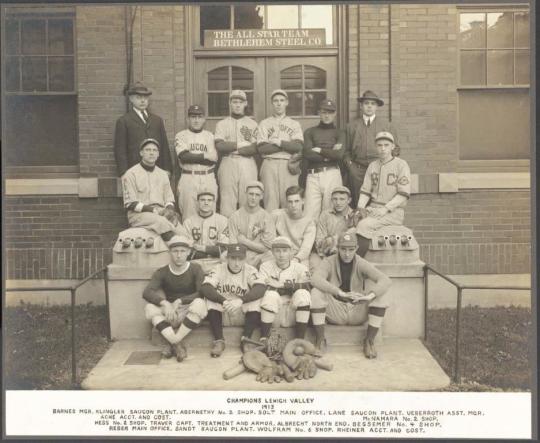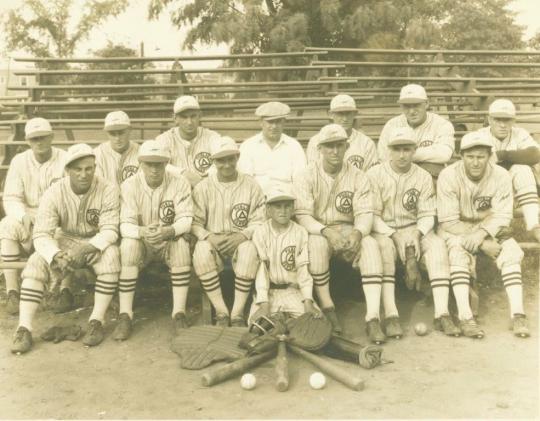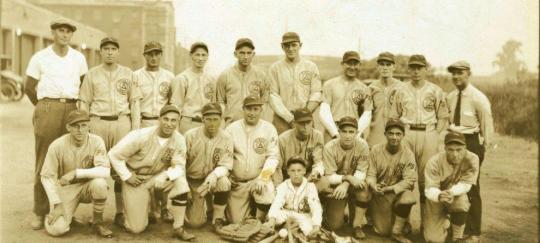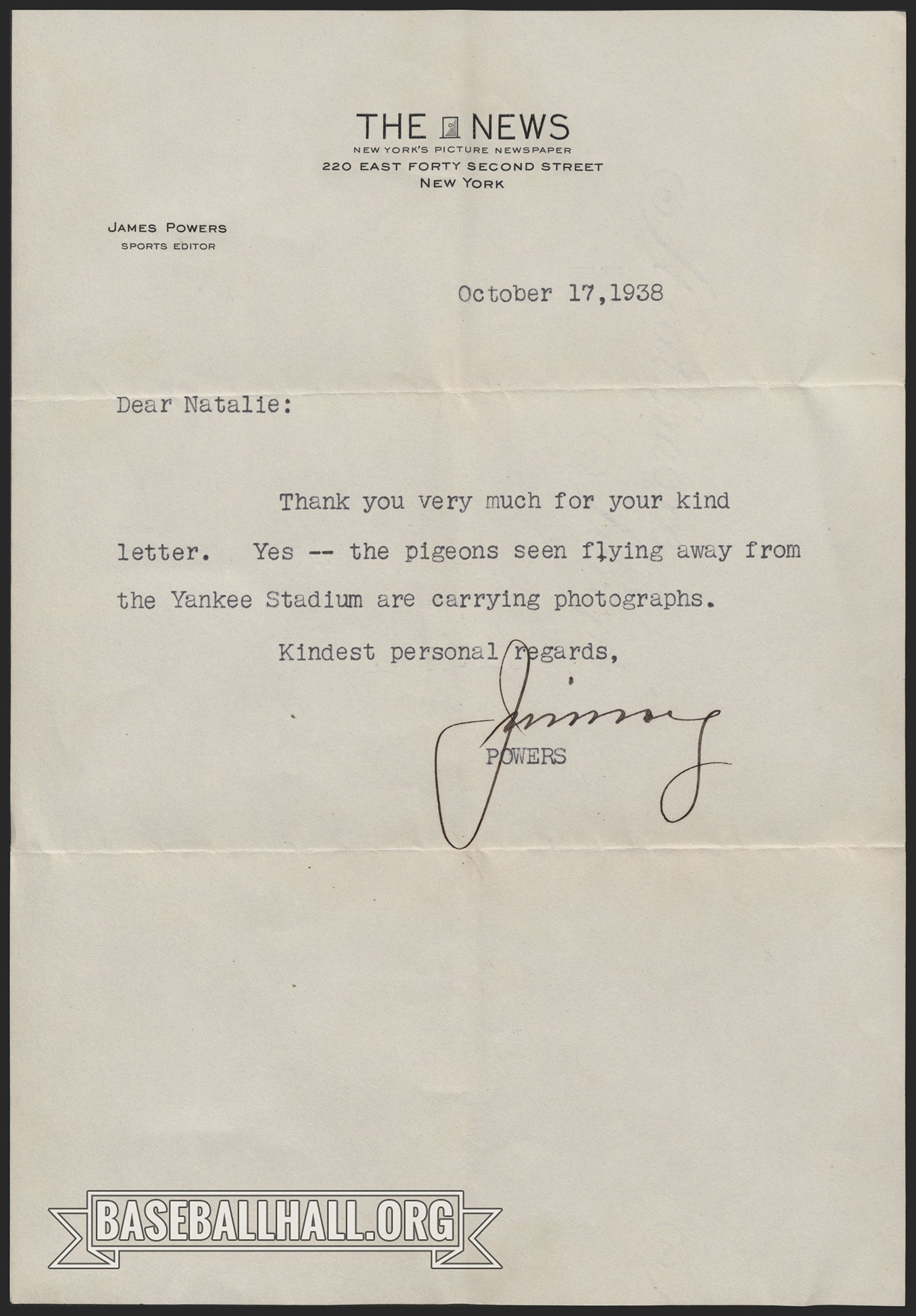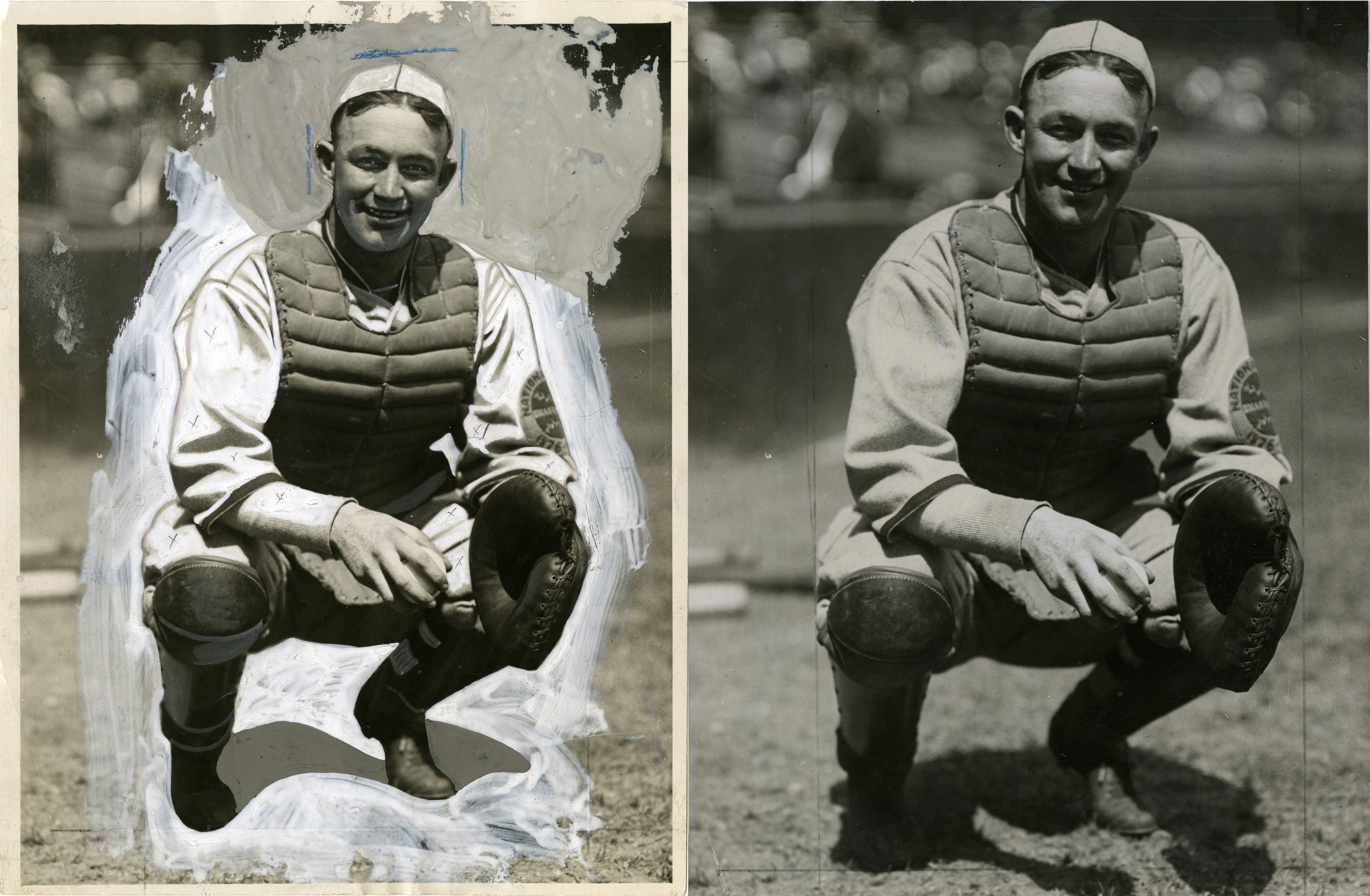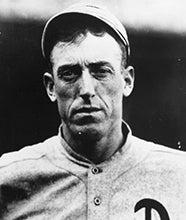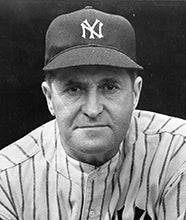- Home
- Our Stories
- #Shortstops: Industry trends
#Shortstops: Industry trends
What do Babe Ruth, Eddie Plank and Hideo Nomo have in common?
In addition to being stars at the big league level, all three spent a portion of their careers playing for industrial league baseball teams.
The history of industrial league baseball is vast and varied, with amateur ballplayers taking the field with their co-workers for centuries. In America, however, industrial league teams truly began to pick up steam at the onset of World War I, when young men were told by the U.S. government to “work or fight.”
These amateur teams saw their on-field talent skyrocket during this time, as professional ballplayers were hired to do work in shipyards or steel mills. Through these industrial leagues, major leaguers were able to comply with the “work or fight” order while industry barons got to field professional-quality baseball teams at their plants.
Bethlehem Steel, in particular, was both an industry and sports powerhouse. Charles M. Schwab reorganized the company in 1904, increasing profits and buying up other nearby steel plants. In addition to fielding baseball teams, Beth-Steel, as it was often referred to, also launched the Bethlehem Steel Soccer Club, which later became a championship team. In 1916, Schwab commissioned Walter F. O’Keefe to organize a six-team baseball league with the intention to, according to the Cincinnati Enquirer, ensure that “the munition makers may enjoy the national game.” These teams took on a life of their own, with Schwab and other industry magnates hiring managers and scouts to recruit both current major leaguers and new talent. In addition to Ruth and Plank and fellow future Hall of Famer Joe McCarthy, Joe Jackson also played for industrial league teams during this time.
Recently, the National Baseball Hall of Fame and Museum received new donations to help further preserve the history of America’s industrial league baseball teams. Two of the photographs feature the Public Service Electric and Gas teams from the 1920s or 1930s. A third image is a team shot of the 1913 Bethlehem Steel All-Star Team.
Unlike the Beth-Steel teams during World War I, the team photographed in the Hall of Fame’s recent donation is made up entirely of amateurs, most of whom were likely steel workers first and ballplayers second.
It’s also worth noting that industrial league baseball was not limited to the United States. Industrial leagues continue to thrive nowadays in Japan, where they operate under the Japan Amateur Baseball Association (JABA). These teams exist separately from Nippon Professional Baseball (NPB) as Japan’s professional baseball league and are owned by companies who pay their players a salary as company employees, rather than ballplayers. Players in the Industrial Leagues are considered amateurs, but that hasn’t stopped a number of them from being signed by MLB teams, including major leaguers such as Hideo Nomo, Junichi Tazawa and Kosuke Fukudome.
Isabelle Minasian was the digital content specialist at the National Baseball Hall of Fame and Museum

